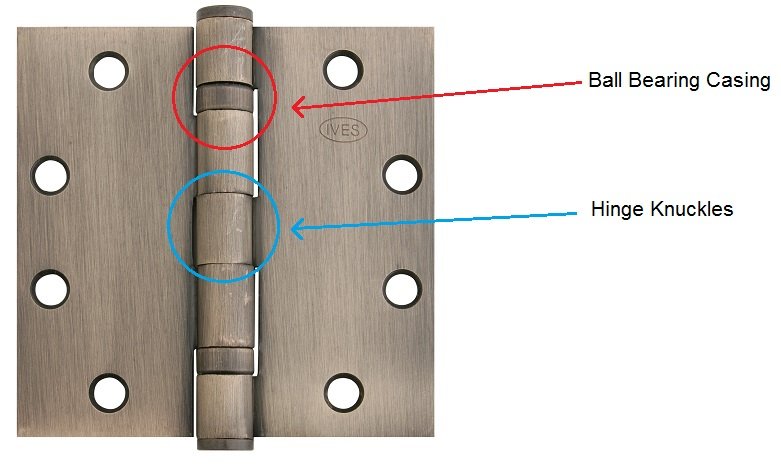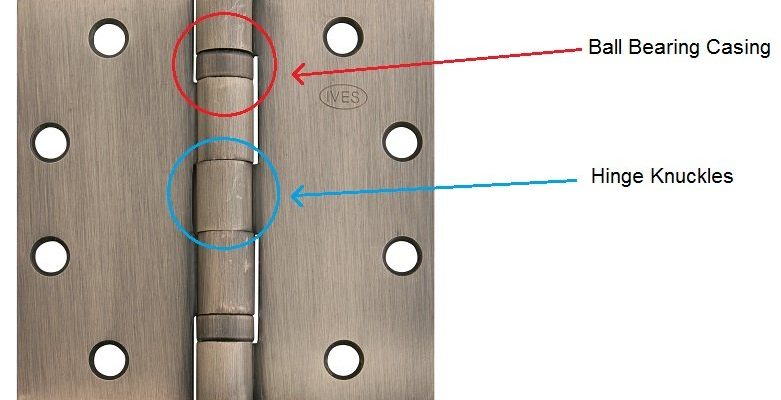
Identifying a worn-out door hinge knuckle might not be on your to-do list, but it can save you from bigger headaches down the line. A door that doesn’t function properly can lead to issues like security concerns or even damage to the door frame itself. In this guide, we’ll walk through how to spot signs of wear, what to look for, and how to maintain those pesky hinges. Let’s dive into this together, shall we?
Understanding How Door Hinges Work
Before we get into how to identify a worn-out door hinge knuckle, it’s essential to understand how door hinges work in the first place. Think of a hinge as the wrist of a door. It allows the door to swing open and closed smoothly while supporting its weight. The knuckles are the rounded parts that fit together; they’re the joints that allow for movement. When everything is in good condition, you can hardly notice them—just like a well-oiled machine.
Over time, dirt, moisture, and friction can wear on those knuckles, causing them to become loose or misaligned. If you’ve ever had trouble with a door sticking or squeaking, it might be because the knuckles are worn out. Being proactive and checking them regularly can save you from those annoying door troubles down the road.
Signs of Wear: What to Look For
Identifying a worn-out door hinge knuckle isn’t rocket science, but knowing what to look for can prevent future problems. Here are some signs that your door hinge may be nearing the end of its life:
- Squeaking or Grinding Noises: If your door is making sounds like it’s auditioning for a horror movie every time you open it, that’s a clear sign of wear.
- Door Misalignment: Notice if the door is sticking or not hanging straight. This could be due to worn knuckles not allowing the hinge to hold the door properly.
- Visible Damage: Check for cracks, rust, or corrosion on the hinge. These physical signs can indicate serious wear that needs addressing.
- Excessive Movement: If the door seems too loose when you open or close it, it might be time for a closer inspection of the knuckles.
Each of these signs helps paint a picture of just how much wear your hinges are experiencing.
Inspecting the Hinge: Step-by-Step
Now that you know what to look for, let’s talk about how to inspect your door hinge knuckles effectively. Grab a flashlight and let’s get to work:
1. Get a Clear View: Open the door and look closely at the hinge. You want to check the knuckles where the leaves meet.
2. Check for Play: Gently wiggle the door while observing the hinge. Any noticeable movement might suggest the knuckles are worn.
3. Listen for Sounds: As you move the door, pay attention to any unusual noises—squeaks, creaks, or grinding can be telltale signs of wear.
4. Look for Rust or Damage: If you see rust or cracks on the hinge body or knuckles, it’s a clear signal that it might be time to replace the hinge.
By taking these steps, you’ll get a better idea of your hinge’s condition. Think of it as giving your door a routine health check-up!
Maintenance Tips for Longer Lasting Hinges
Maintaining your door hinges can significantly extend their life and save you from replacing them too often. Here are some simple maintenance tips to keep your hinges running smoothly:
- Regular Cleaning: Wipe down hinges with a damp cloth to remove dirt and grime. This helps prevent wear and tear.
- Lubrication: Apply a drop of lubricant (like WD-40) to the knuckles every few months. This reduces friction and makes opening and closing easier.
- Adjust When Necessary: If your door seems misaligned, adjust the screws in the hinge. Tightening them can help the hinge function better.
- Replace Damaged Parts: If you notice any wear, don’t wait too long to fix it. Replacing a hinge before it completely fails can save you trouble.
These simple tasks can go a long way in keeping your hinges in good shape for years to come.
When to Replace Your Hinges
So, how do you know when it’s time to throw in the towel and replace your hinges entirely? Here are a few scenarios to keep in mind:
– Severe Rust: If the hinge is heavily rusted, it’s a clear sign it’s time for a replacement. Rust can weaken the hinge and affect your door’s performance.
– Cracks or Breaks: Any visible cracks or breaks mean the hinge can no longer do its job properly. Don’t risk it—replace it.
– Constant Noise: If lubrication and adjustments don’t fix the squeaking or grinding sounds, it might be time to explore new hinges.
Remember, it’s always cheaper to replace a door hinge than a door. If you’re unsure, you can always consult a professional for advice.
Choosing the Right Replacement Hinges
If you’ve decided to replace your worn-out door hinge knuckles, you might be wondering how to pick new ones. Here’s what to consider:
1. Material: Choose between materials like stainless steel for durability or brass for an antique look. Think about the environment your door is in—will it be exposed to moisture?
2. Size: Measure the existing hinge to ensure a proper fit. Most doors use standard-sized hinges, but it’s always good to double-check.
3. Style: Consider whether you want a decorative hinge or a simple, utilitarian one. The right style can enhance your door’s overall appearance.
4. Weight Capacity: Make sure the new hinges can support the weight of your door. Heavier doors require sturdier hinges.
Choosing the right hinges not only impacts functionality but also adds to the aesthetics of your space.
Final Thoughts: Keeping Your Doors in Top Shape
Identifying a worn-out door hinge knuckle may seem small, but it can have a big impact on how smoothly your doors operate. By being aware of the signs of wear, inspecting hinges regularly, and performing simple maintenance, you can avoid costly repairs and keep your home running smoothly.
Remember, don’t ignore the little things—like creaky doors or loose hinges—because they often lead to bigger issues down the road. A little attention now can save you a lot of headaches later. So go ahead, take a moment to check your door hinges today!
